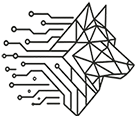
Train the Future. Build AI-Native Teams.
We don’t just hand over AI—we equip your teams to build it themselves. Our Autonomous Engineering Training is designed to upskill developers, product teams, and data engineers on how to co-create with AI, use autonomous agents, and orchestrate LLM-based solutions.
Key Modules:
Intro to AI Agents and Task Decomposition
Autonomous DevOps and CI/CD with AI
LLM Prompt Engineering and Orchestration
Agentic SDLC: Build, Test, Refactor with AI
AI Pair Programming in VSCode, Replit, or Snowflake Cortex
Client Outcomes:
3x increase in AI project velocity
80% internal adoption of new tools
Autonomous innovation across business units
how it worksEverything you need to know about
It’s not a course. It’s a transformation. We teach your teams how to build with AI, not just use it.
Our training enables engineers, analysts, and product teams to design, deploy, and collaborate with autonomous agents. It’s hands-on, code-first, and tailored to your real systems—so the learning sticks and scales.
Anyone building the future—developers, data scientists, product managers, and business technologists.
Whether you’re upskilling a dev team or enabling product owners to prototype with AI, we train cross-functional teams to work with agents, orchestrators, and multi-model workflows in production-grade environments.
From prompt engineering to multi-agent systems, we cover the new AI software stack.
Topics include LLM architecture, agent frameworks, AI debugging, CI/CD for AI, secure prompt routing, and live integrations with tools like Snowflake, Bedrock, and LangChain. Each module includes real-world exercises.
Tailored sprints, live workshops, embedded coaching, or async content—whatever fits your team.
We offer flexible formats: on-site intensives, cohort-based online sessions, or embedded coaching during live AI projects. Teams walk away not just with knowledge—but with working code, reusable assets, and system confidence.



